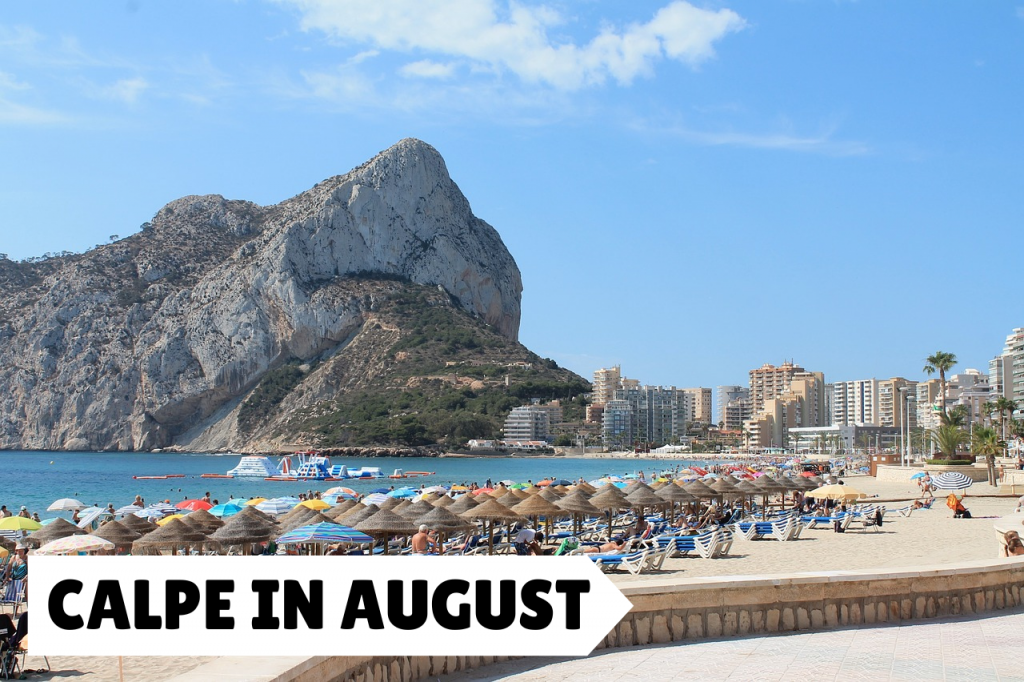As August rolls into Calpe, a picturesque town on the Costa Blanca of Spain, it brings with it the peak of summer's embrace. Calpe, known for its stunning rock formation, Peñón de Ifach, which towers over the Mediterranean, becomes a beacon for sun-seekers and holidaymakers during this month. The weather plays a significant role in shaping the experiences of those who visit or dwell in this charming locale. In this article, we delve into various aspects of Calpe's weather in August, including temperature ranges, sea conditions, rainfall patterns, and how these elements influence local life and tourism.
Temperature: A Warm Embrace
August in Calpe is synonymous with warm weather. Daytime temperatures hover around 28°C to 31°C (82°F to 88°F), creating the perfect backdrop for beach activities and exploring the outdoors. Nights are comfortably warm, with temperatures rarely dipping below 20°C (68°F). This balmy climate is ideal for enjoying the town's vibrant nightlife without the need for heavy clothing.
However, the warm weather isn't without its peaks. Occasionally, temperatures can soar above 35°C (95°F) during heatwaves, thanks to the hot winds blowing in from the interior. Visitors are advised to stay hydrated, wear sun protection, and seek shade during the hottest parts of the day.
Sea Conditions: Inviting Waters
One of the highlights of visiting Calpe in August is the opportunity to swim in the Mediterranean Sea. The sea temperature in August averages around 25°C (77°F), making it inviting for swimming, snorkeling, and water sports. The clear, calm waters not only provide relief from the heat but also offer a chance to explore the marine life that thrives along the coastline.
Beachgoers will find Calpe's beaches, such as Playa de la Fossa and Playa del Arenal-Bol, bustling with activity. The lifeguard services and amenities available ensure a safe and enjoyable experience for everyone.
Rainfall: Rare but Refreshing
Rainfall in Calpe during August is a rare occurrence. The month sees minimal precipitation, with the chance of rain being highest towards the end of the month. When it does rain, it's usually in the form of short, heavy showers that quickly clear up, leaving behind a refreshing coolness and clearer skies.
The scarcity of rain contributes to the overall dry conditions, emphasizing the importance of water conservation and fire safety, especially in natural areas.
Humidity and Wind: The Subtle Influences
Humidity in Calpe during August can vary, but it generally remains moderate, making the high temperatures more bearable. Early mornings and late evenings might feel more humid, especially near the coast, adding a dewy freshness to the air.
The wind in Calpe plays a crucial role in moderating the summer heat. The sea breezes, particularly in the afternoon, provide a natural cooling effect that is most welcome during the warmest parts of the day. These breezes not only cool the air but also help to maintain good air quality by dispersing any pollution.
Local Life and Tourism: Thriving under the Sun
The weather in August significantly influences the rhythm of life in Calpe. Locals and visitors alike adapt to the summer conditions by embracing a more relaxed pace. Businesses and restaurants often adjust their hours to accommodate the siesta tradition, closing in the hottest part of the afternoon and reopening in the cooler evening.
Tourism peaks in August, with the town buzzing with festivals, open-air concerts, and cultural events that take advantage of the warm summer nights. The warm weather encourages outdoor dining, with many restaurants offering seating under the stars.
Water-based activities see a surge in popularity, from boat tours around Peñón de Ifach to paddleboarding and jet-skiing. For those seeking a break from the beach, hiking in the cooler parts of the day or visiting historical sites like the ancient Roman baths offer a different perspective of Calpe's natural and cultural beauty.
Tips for Visiting Calpe in August
- Stay Hydrated and Protected: The sun can be intense, so carry water, wear sunscreen, and don a hat.
- Plan for the Heat: Schedule strenuous activities for the cooler parts of the day, like early morning or late evening.
- Book in Advance: With August being peak tourist season, accommodations and activities can fill up quickly.
- Embrace Local Customs: Enjoy the siesta, dine late, and immerse yourself in the local festivities.
- Explore Beyond the Beach: Discover Calpe's rich history, culture, and natural landscapes.
Conclusion
August in Calpe offers a quintessential summer experience, marked by warm weather, inviting seas, and vibrant local culture. While the heat and crowds may be more pronounced, the opportunities to create lasting memories abound. Whether it's lounging on the sun-kissed beaches, diving into the Mediterranean's azure waters, or exploring the town's rich tapestry of history and nature, Calpe in August is a destination that captivates and delights. With careful planning and an openness to embrace the local way of life, visitors can fully enjoy all the joys that this beautiful Spanish town has to offer during its sunniest month.
Frequently Asked Questions (FAQs)
What are the average daytime temperatures in Calpe in August?
The average daytime temperatures in Calpe during August range between 28°C to 31°C (82°F to 88°F), providing perfect conditions for beach activities and exploring
Is it common for it to rain in Calpe during August?
Rainfall in Calpe during August is rare, with minimal precipitation and occasional short, heavy showers that quickly clear up
How warm is the sea around Calpe in August?
The Mediterranean Sea around Calpe in August has an inviting average temperature of about 25°C (77°F), ideal for swimming, snorkeling, and water sports
What are the recommended precautions for visitors to Calpe in August due to the heat?
Visitors are advised to stay hydrated, wear sun protection, seek shade during peak sun hours, and plan strenuous activities during cooler parts of the day
What activities are popular in Calpe during August?
Popular activities include swimming, snorkeling, water sports, outdoor dining, attending local festivals and concerts, and exploring historical sites and natural landscapes
